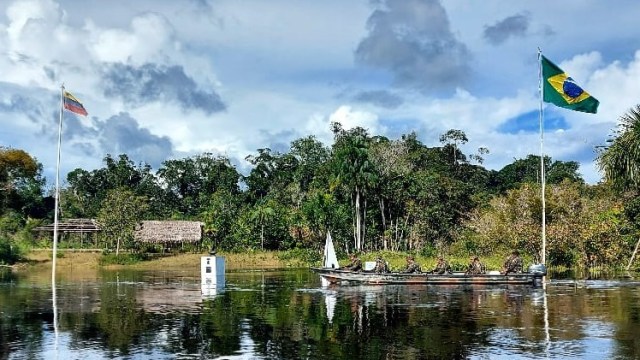
Violence in the Brazilian Amazon is on the rise, which is now home to 13 of the country’s 30 most violent cities, as narcotrafficking and environmental crimes plague the region, the recently released Cartography of Violence in the Amazon Region survey of the São Paulo-based think tank Brazilian Public Security Forum indicated.
By Diálogo Américas – Andréa Barretto
Aug 10, 2022
The study highlights three main factors for the hike in violence in the Amazon: the increased presence of organized crime groups and disputes among them for control of transnational drug routes; deforestation carried out for agriculture and cattle ranching; and illegal mining and its advances in indigenous lands.
Narcotrafficking groups
Narcotrafficking organizations are present in all nine states of the Legal Amazon. According to the study, three out of a total of 21 groups lead the disputes for control of the territory: the First Capital Command and the Red Command – which both go back 30 years and whose presence in the country’s north increased in 2018 – and the Northern Family, which was created in the state of Amazonas in 2007.
Seven countries border the Brazilian Amazon: Bolivia, Colombia, and Perú, considered the main cocaine producers in the world, as well as Guyana, French Guiana, Suriname, and Venezuela. The proximity to drug supplying countries is one of the reasons that explain, according to the research, the attraction of narcotrafficking organizations to the region. The issue is further complicated by the relationships between Brazilian criminal groups and regional factions: “The Brazilian groups depend on such relationships to receive drugs and put in full operation the sale of cocaine, ecstasy, and skank [marijuana] in the internal market and in the transactions that involve the global market,” the research indicates.
Deforestation
The study also reveals that areas under deforestation are more prone to violence than forested areas. Land conflicts, such as unlawful occupancy, are among the main reasons. This type of criminal activity often uses deforestation, fires, and the falsification of documents to take possession of public or private lands. According to the study, “deforestation works as a factor to increase the price of land, which can be worth more than 20 times that of land still covered by the forest.”
Illegal mining
Illegal mining in the Amazon region creates conflicts between indigenous people, miners, environmentalists, public security forces, and organized crime groups that, since 2018, have begun to exploit the activity as a source of income and for money laundering.
The footprint of illegal mining has been swelling in the Brazilian Amazon were indigenous territories are the worst affected. A survey of the MapBiomas project – a collaborative network formed by Brazilian NGOs, universities, and technology startups that seeks to track the transformations in the Brazilian territory – showed that areas affected by illegal mines in indigenous lands grew by 495 percent between 2010 and 2020.
In addition to deforestation, the mercury that miners use to extract gold is toxic and highly damaging to the environment and human health. According to the Federal Public Ministry of Amazonas, each kilogram of gold extracted illegally in the Amazon produces more than $310,000 in environmental damage.
Combat
To tackle the complex problem of violence in the Amazon, the Brazilian government has expanded its activities in the region. Starting in 2018, the Brazilian Army (EB) sent an additional 1,624 service members to the Northern and Western Amazon commands, which have jurisdiction over territories in the Brazilian Amazon. The number represents a 5 percent increase in personnel in the region, the EB’s Social Communication Center (CCOMSEx) told Diálogo. Currently, the EB has 32,622 service members deployed in the region.
Authorities also increased their operations to combat trans-border and environmental crimes. According to the CCOMSEx, in the Amazon Military Command alone, troops carried out 125 operations between January and May 2022, while in all of 2021, they conducted 148 operations.
The Brazilian Air Force (FAB) also took an important step in 2022 concerning surveillance of the world’s largest rainforest. In May, the FAB launched two microsatellites into space. The equipment supports the activities of the Operational and Management Center of the Amazon Protection System, an agency of the Ministry of Defense.
Images captured by the satellites will be used to support the fight against narcotrafficking and illegal mining, as well as to determine river navigability and monitor natural disasters, wildfires, the Exclusive Economic Zone, and border surveillance and control operations, the FAB said in a statement.
…
Read More: Diálogo Américas – Crime on the Rise in Brazilian Amazon
…

